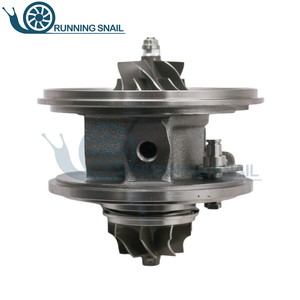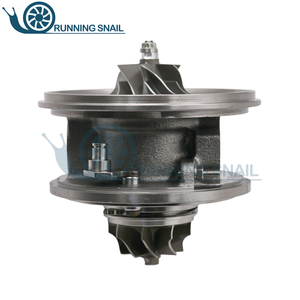(201 products available)






















































































































































































Gys are well-known for their high-quality, long-lasting, and dependable turbochargers. They've created a wide variety of turbochargers to meet various market demands. Below are some common GY turbo types.
Single-Turbo
Single-turbo is the most common and simplest turbocharger system. It consists of a single turbocharger linked to the exhaust system and the engine intake system. Single-turbochargers come in various sizes to suit different engine sizes and performance requirements. They are popular in both gasoline and diesel engines due to their simplicity and efficiency. The GY single-turbo is further divided into 4 sub-categories.
Gy Single Turbo V8
The GY single turbo V8 is designed for vehicles with V8 engines. The GY single-turbo V8 improves airflow into the engine, hence increasing power and torque. They are ideal for high-performance vehicles or those who want to enhance engine performance. The GY single-turbo V8 consists of a compressor (with housing and wheel) and a turbine (with housing and shaft).
GY 6.0 Turbo
GY 6.0 turbos are designed for GY 6.0L V8 engines. The GY 6.0 turbo is a twin-turbo system with two turbochargers, one for each bank of the V8 engine. The GY 6.0 turbos are known for their high power output and efficiency. They are ideal for high-performance vehicles.
GY 5.3 Turbo
GY 5.3 turbos are designed for GY 5.3L V8 engines. The GY 5.3 turbo is a single-turbo system. The GY 5.3 turbos are known for their quick spool times, making them suitable for applications requiring rapid acceleration and high peak power.
Dual-turbo
GY dual-turbos are designed for high-performance vehicles. The dual-turbos consist of two turbochargers (twin-turbo) placed in the exhaust system, one for each cylinder bank in V engines. The GY dual turbos improve engine power and efficiency, making them ideal for high-performance vehicles. The GY dual-turbo is further divided into sub-categories.
GY Twin Turbo V6
The GY twin-turbo V6 is a high-performance GY turbocharger designed for V6 engines. The GY twin-turbo V6 improves engine power output and efficiency. They are suitable for high-performance vehicles or those who want to upgrade their engine performance.
GY Twin Turbo V8
The GY twin-turbo V8 is a high-performance GY turbocharger designed for V8 engines. The GY twin-turbo V8 is suitable for high-performance vehicles and provides a significant power boost and efficiency improvements.
Oil Changes
Regular oil changes are another vital component of proper turbo upkeep. Fresh oil cleans the system and protects vital components like the turbo from wear. The oil helps lubricate the moving parts in the turbocharger. Changing the oil regularly flushes out contaminants that could damage the turbo. The new oil also provides a fresh supply to maintain optimal lubrication and cooling.
Tuning
Proper tuning is essential for the health of the turbocharged engine and the turbo itself. The tuning adjusts parameters like air-fuel ratio and ignition timing to match the specs of the new turbo. This ensures the engine runs smoothly and efficiently with the upgraded airflow provided by the turbo. Without proper tuning, the engine may struggle to adapt to the changes from the new turbo. It could run lean or rich, leading to performance issues and potential damage over time.
Quality Replacement Parts
When it comes time for repairs or replacements, using high-quality aftermarket or OEM parts is crucial. The components need to match the specifications of the original turbo for proper fit and function. Aftermarket parts can be more affordable while still providing reliable performance. However, it's essential to research brands and reviews to ensure they meet quality standards. The wrong parts could lead to fitment issues or subpar performance from the turbo system.
Intake and Intercooler Maintenance
The intake and intercooler work in unison with the turbo to provide forced induction. Maintaining these components is just as crucial as caring for the turbo itself. Over time, dirt and debris build up in the intake piping and air filter. This clogs the pathways and restricts airflow to the engine. Cleaning the intake system regularly ensures optimal airflow to maximize performance. The intercooler cools the compressed air from the turbo before sending it to the engine. A dirty intercooler can lead to higher temps and less efficient cooling. A buildup of grime on the outside of the intercooler can block airflow, while internal deposits can impede heat transfer. A dirty intercooler can lead to hotter air being sent to the engine, resulting in decreased performance.
Before buying any GY turbo parts, it is important to understand the target market and customer needs. Here are some factors to consider:
Engine Size:
Choose GY turbochargers that match the standard turbo replacement sizes for most vehicles. Focus on turbos sized for 4-cylinder and 6-cylinder gas engines, as well as smaller V6 and diesel engines. The replacement turbo must have the same A/R ratio, compressor wheel size, and turbine wheel size as the original factory turbo.
Brand and Quality:
Consider well-known aftermarket brands like Garrett, BorgWarner, and Mitsubishi. These brands use high-quality materials and precise engineering that can outlast standard GY turbo parts. Look for components with superior craftsmanship that exceed OEM specs.
Vehicle Compatibility:
Select GY turbo parts that specify the makes and models of vehicles they are designed for. The replacement turbos, manifold pipes, and other components must fit perfectly without modifications. Use parts catalogs to find components with exact vehicle matchments.
Performance Upgrades vs. Reliability:
Some customers may want to increase their engine's horsepower through GY performance turbos. However, most drivers prefer turbos that provide smooth, dependable power like the original equipment. When choosing turbos, strike a balance between improving performance and maintaining long-term reliability.
Replacements of GY turbo parts are fairly straightforward, especially when carrying out a replacement on a fixed-geometry turbo. The parts needed to carry out a replacement DIY include the new turbocharger, basic hand tools (sockets, wrenches, pliers), and possibly some specialty tools (torque wrench, oil line fitting tool, EGR valve spring compressor).
Before starting any replacement process, it is always advisable to consult the vehicle's service manual for specific instructions and safety precautions. After gathering all the necessary tools, follow the steps below for a successful diy turbo replacement.
Step 1: Preparation
Ensure the vehicle is parked on a flat surface, and the engine is cool. Disconnect the battery's negative terminal to prevent any electrical issues. Gather all the necessary tools and ensure that the new turbocharger is compatible with the vehicle's make and model.
Step 2: Accessing the Turbocharger
To begin with, removing any engine covers or components obstructing the turbocharger's access. Depending on the vehicle's design, the turbocharger is usually located near the exhaust manifold. Once located, disconnect the intake and exhaust pipes connected to the turbo.
Step 3: Disconnecting the Turbocharger
Next, disconnect any oil lines and coolant lines (if applicable) to prevent leaks. Remove any bolts or nuts securing the turbocharger to the exhaust manifold and carefully lift the turbo out of its place. It might be necessary to remove some bolts with a socket extension or swivel joint to reach tight spaces.
Step 4: Installing the New Turbocharger
Position the new turbocharger in the housing and reinstall the bolts or nuts holding it to the exhaust manifold. Reconnect any oil lines using their appropriate fittings and coolant lines if the new turbo is water-cooled. Ensure all connections are tight to avoid leaks.
Step 5: Reassembling and Final Checks
Reconnect the intake pipes to the turbocharger, ensuring proper alignment and sealing. Reassemble any components or covers removed during disassembly. Reconnect the battery's negative terminal and start the engine. Allow it to idle for a few minutes while checking for leaks or unusual noises. Once satisfied with the installation's integrity, take the vehicle for a short test drive and recheck for any issues.
Q1: What does a gy turbo upgrade do?
A1: By upgrading to a GY turbo, the airflow in and out of the engine improves. This means more air and fuel can squeeze into the engine's cylinders, allowing for extra power. When the engine runs, it can pull in and push out air more efficiently, leading to increased horsepower and torque.
Q2: What are the symptoms of a GY turbo being faulty?
A2: Faulty GY turbos can show several signs. Drivers might notice less acceleration or the car feeling sluggish. There could be strange noises like whining or rattling from the turbo. Visuals like smoke from the exhaust or the engine running rough are also signs. Warning lights on the dashboard may indicate turbo or engine issues. If the turbo's wastegate is stuck open, it can cause the engine to run on too much air and throw off the air-fuel balance. Overheating can occur if the oil supply to the turbo is blocked or insufficient. Other symptoms include a lack of power, especially at higher speeds, and a visible increase in exhaust emissions, particularly related to unburned fuel due to incomplete combustion.
Q3: Can the GY turbo be repaired?
A3: In some cases, GY turbos can be repaired, but it depends on the damage's extent and location. Minor issues like carbon buildup or a faulty actuator may be fixed with cleaning or part replacement. However, more complex issues, such as bearing failure or housing cracks, require a complete turbo rebuild or replacement. Repaired turbos may not perform as well as new ones. Therefore, it is more advisable to gy turbo replace.
Q4: What is the warranty period for gy turbo?
A4: The warranty period for GY turbos varies depending on the manufacturer and supplier. Typically, GY turbo manufacturers offer a 1-to-2-year warranty on the original purchase. Some also provide a limited lifetime warranty on repairs. Be sure to read the fine print and know what is covered under the warranty to avoid incurring any extra costs.
Q5: Where should the gy turbo be bought?
A5: The gy turbo should be bought from reputable suppliers, wholesalers, and manufacturers. Chovm.com connects buyers to authentic suppliers of a wide range of GY turbos. The platform also provides customer reviews and ratings to help source legit suppliers.